Ermenegildo Zegna Couture S/S 2020 Milan Fashion Week Men's
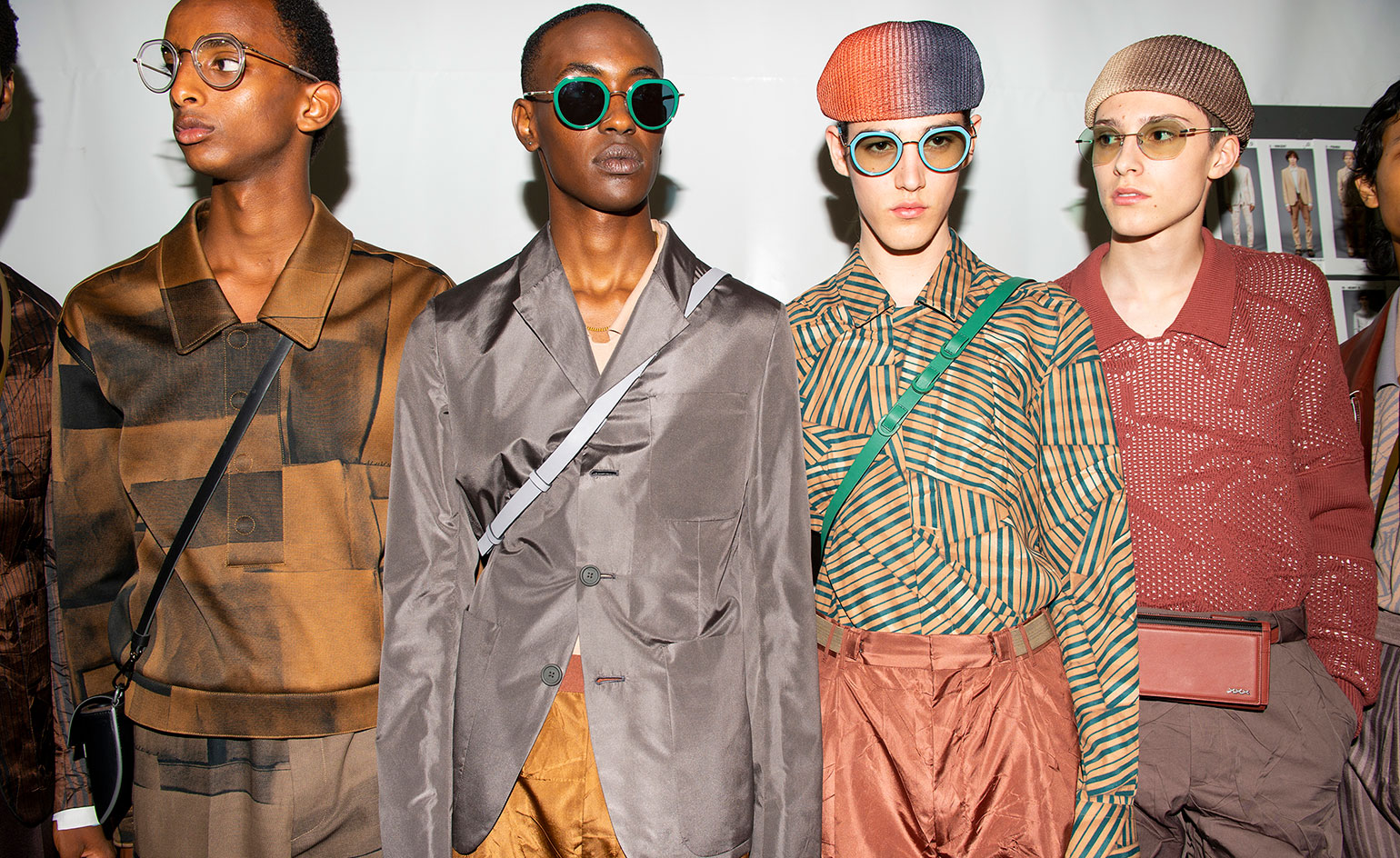
Mood board: Post Pitti and onto the first of the Milan menswear shows, the mood is still one of regeneration: re-use and re-do. The call to action on the notes at Alessandro Sartori’s S/S 20 show asked us to #UseTheExisting and so the collection had a sustainability-first style. The company is committed to using more wool, as well as technical fabrics developed in-house, to help close the circle of traceability. Suits were made entirely from wool remnants at Zegna’s Achill farm; a bomber in plum had a sun-bleached patchwork print. The silhouette was lean. Blousons and sleek three-button blazers were paired with soft, slim trousers. Sportier pieces featured voluminous, curved pockets and tailoring had flattened crinkles. Macro chiné motifs gave a painterly feel and denim came washed with mineral dyes.
Scene setting: Renewal is at the forefront of Sartori’s mind. The show was staged underneath the immense industrial shell of Area Falck – once the foundations of one of Italy’s oldest steel companies. Located in Sesto San Giovanni, the area powered the economic boom that allowed Italy to recover after World War II. Yet since the 2000s it has become a wasteland and is now in the middle of regeneration under the watchful eye of Renzo Piano. Soon it will become a hub for health and science, along with green and residential areas including an oasis 65 hectares in size. The show had a dystopian atmosphere, as piles of rubble let off clouds of beige smoke as the sun set around us. Designed and produced by Bureau Betak, the space created a tough, brooding mood for the show; the clothes were smart in rusty tones.
Sound bite: ‘It is our duty as denizens of this world to live responsibly,’ Sartori says. ‘Everything is connected, and everything conveys the same idea: we do not need to create the new from scratch, but we can reuse and reinvent the existing, getting progressive fabrics out of discarded ones, translating traditional techniques into innovative lifetime tailoring, turning an abandoned place into an area of creation.’
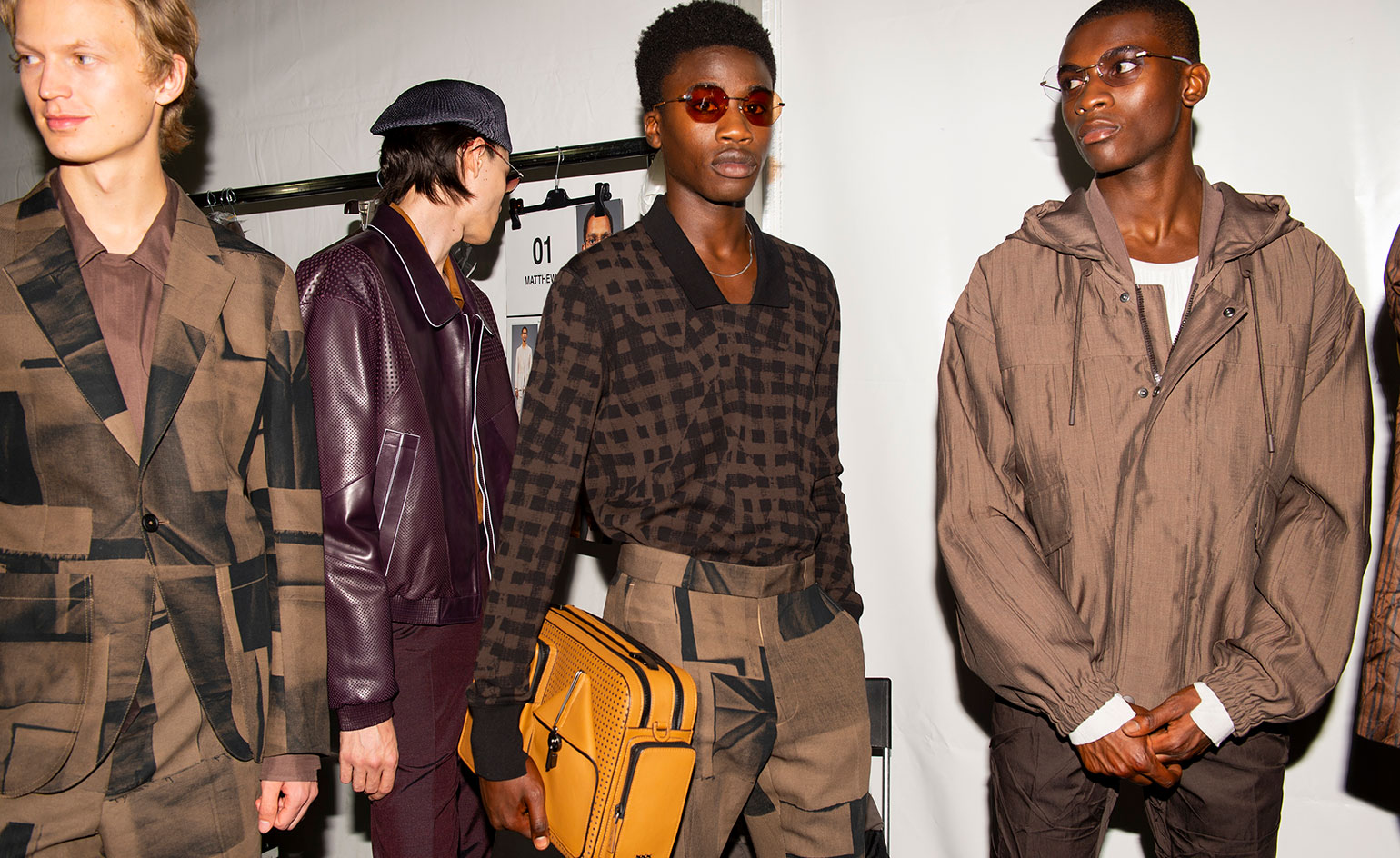
Ermenegildo Zegna S/S 2020. Photography: Jason Lloyd-Evans
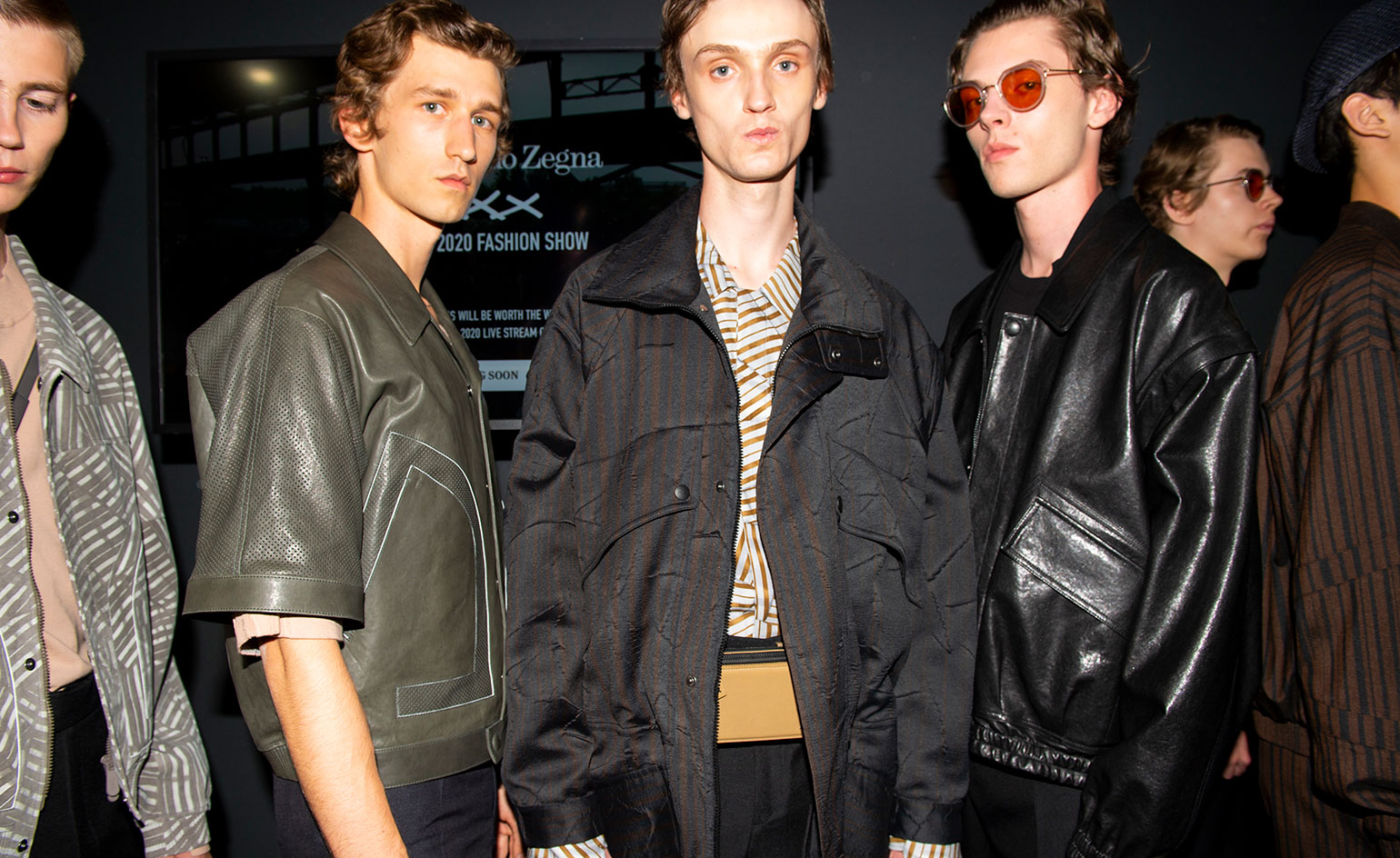
Ermenegildo Zegna S/S 2020. Photography: Jason Lloyd-Evans
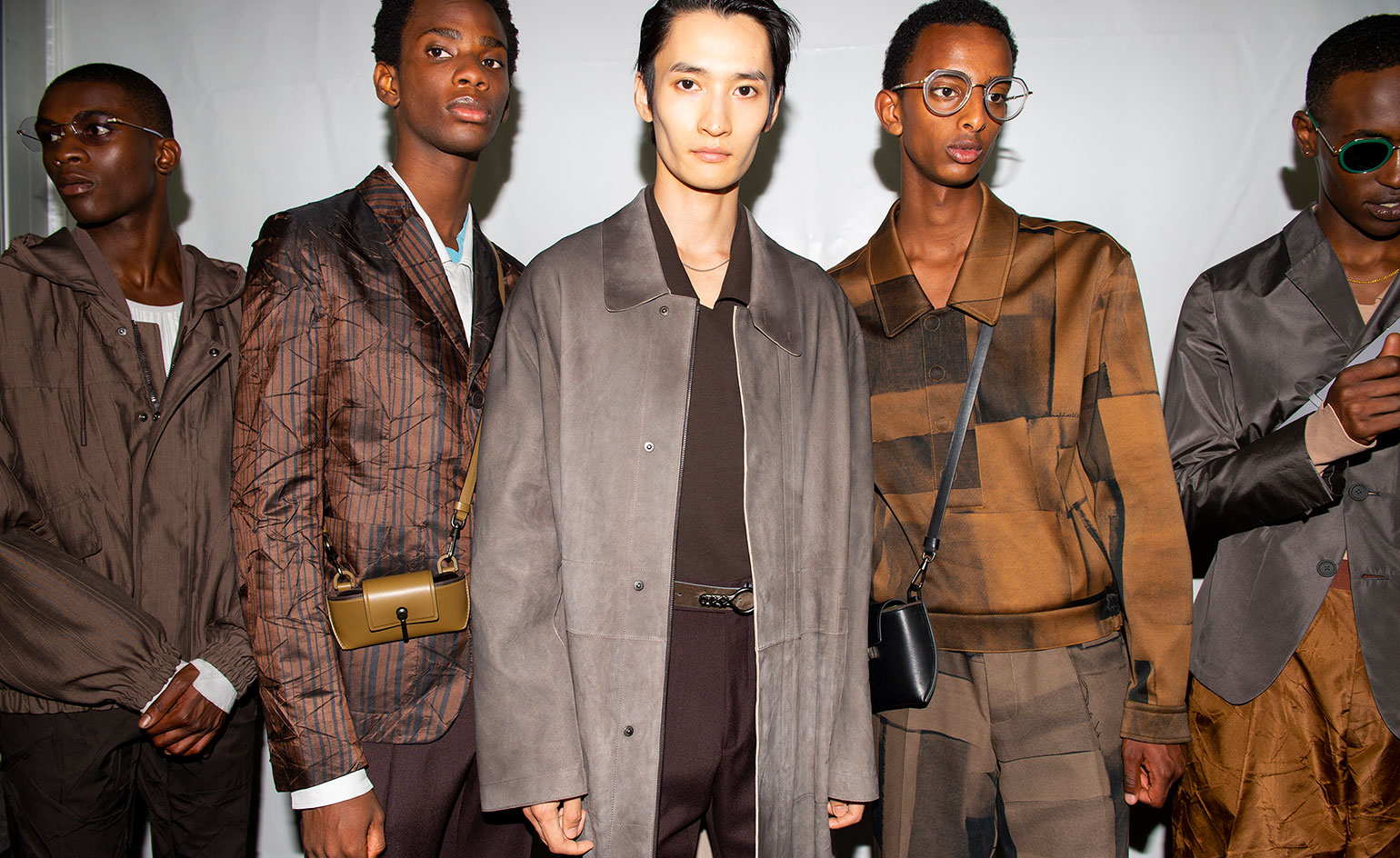
Ermenegildo Zegna S/S 2020. Photography: Jason Lloyd-Evans
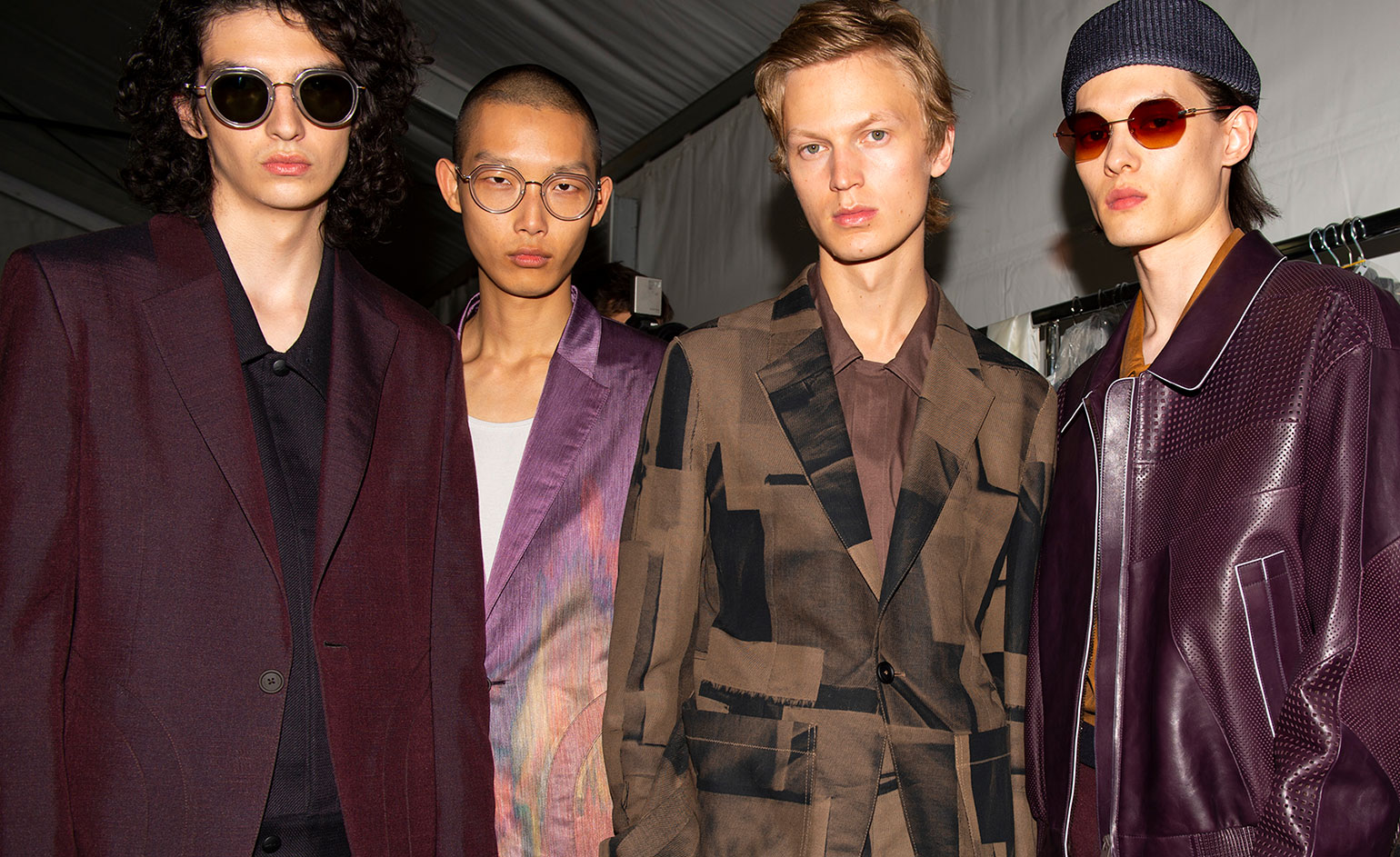
Ermenegildo Zegna S/S 2020. Photography: Jason Lloyd-Evans
Wallpaper* Newsletter
Receive our daily digest of inspiration, escapism and design stories from around the world direct to your inbox.
London based writer Dal Chodha is editor-in-chief of Archivist Addendum — a publishing project that explores the gap between fashion editorial and academe. He writes for various international titles and journals on fashion, art and culture and is a contributing editor at Wallpaper*. Chodha has been working in academic institutions for more than a decade and is Stage 1 Leader of the BA Fashion Communication and Promotion course at Central Saint Martins. In 2020 he published his first book SHOW NOTES, an original hybrid of journalism, poetry and provocation.
-
 At the Regent Street Sensorium, architectural jelly sculptures are designed to ignite the senses
At the Regent Street Sensorium, architectural jelly sculptures are designed to ignite the sensesDelve into the history of London’s Regent Street through a jellyscape, a fragrance cloud and more – plus, for the event’s final week, two new immersive workshops (ends 27 April)
By Tianna Williams
-
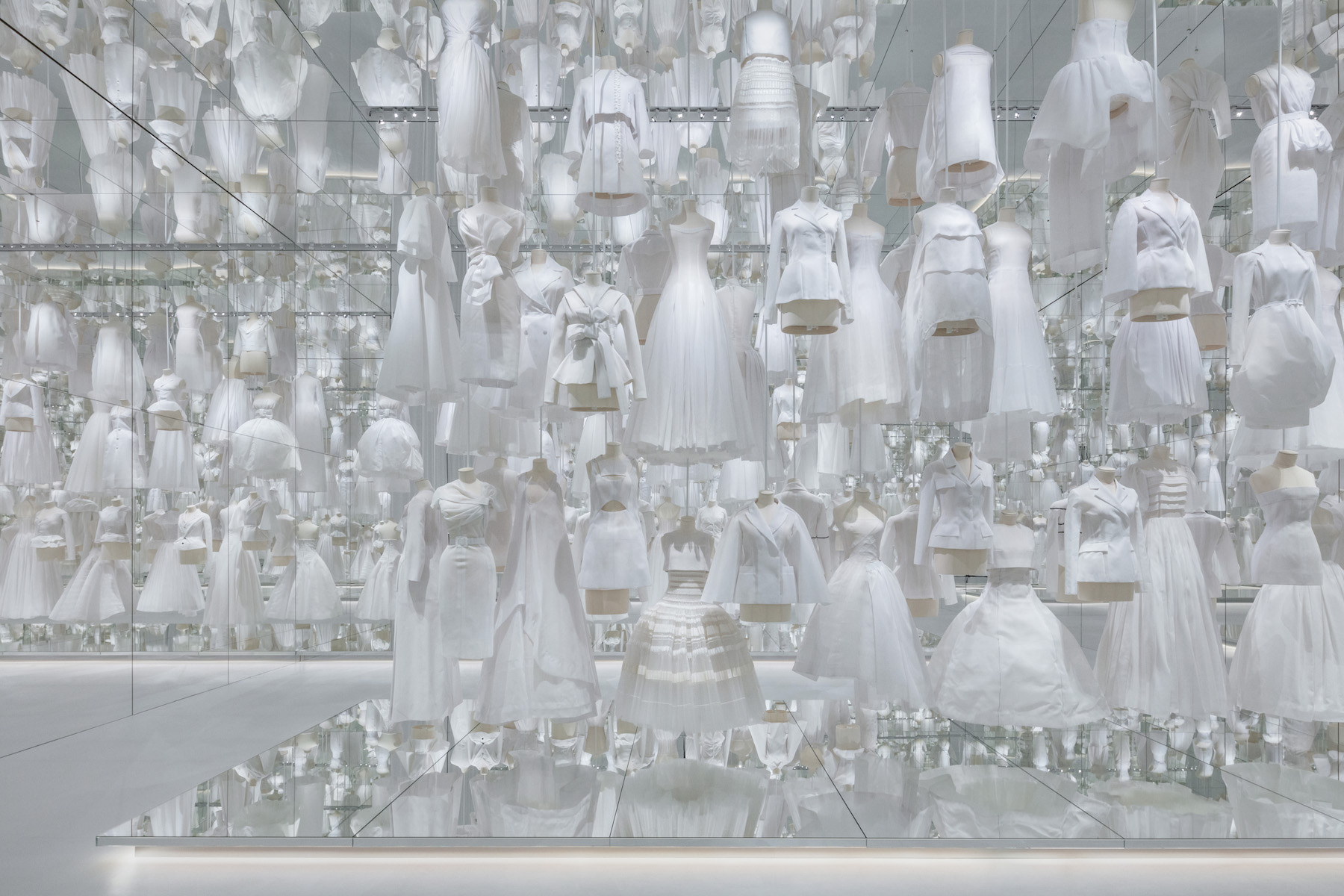 With scenography by OMA, Dior’s ‘Designer of Dreams’ exhibition in Seoul is ‘a piece of theatre’
With scenography by OMA, Dior’s ‘Designer of Dreams’ exhibition in Seoul is ‘a piece of theatre’OMA partner Shohei Shigematsu catches up with Wallpaper* about the dramatic show design for the latest iteration of ‘Christian Dior: Designer of Dreams’, which opened in Seoul this weekend
By Daven Wu
-
 Mercedes-Benz previews its next-gen people mover with an ultra-luxury EV concept
Mercedes-Benz previews its next-gen people mover with an ultra-luxury EV conceptThe Mercedes-Benz Vision V Concept is an art deco picture palace on wheels, designed to immerse passengers in parallel worlds as they travel
By Jonathan Bell